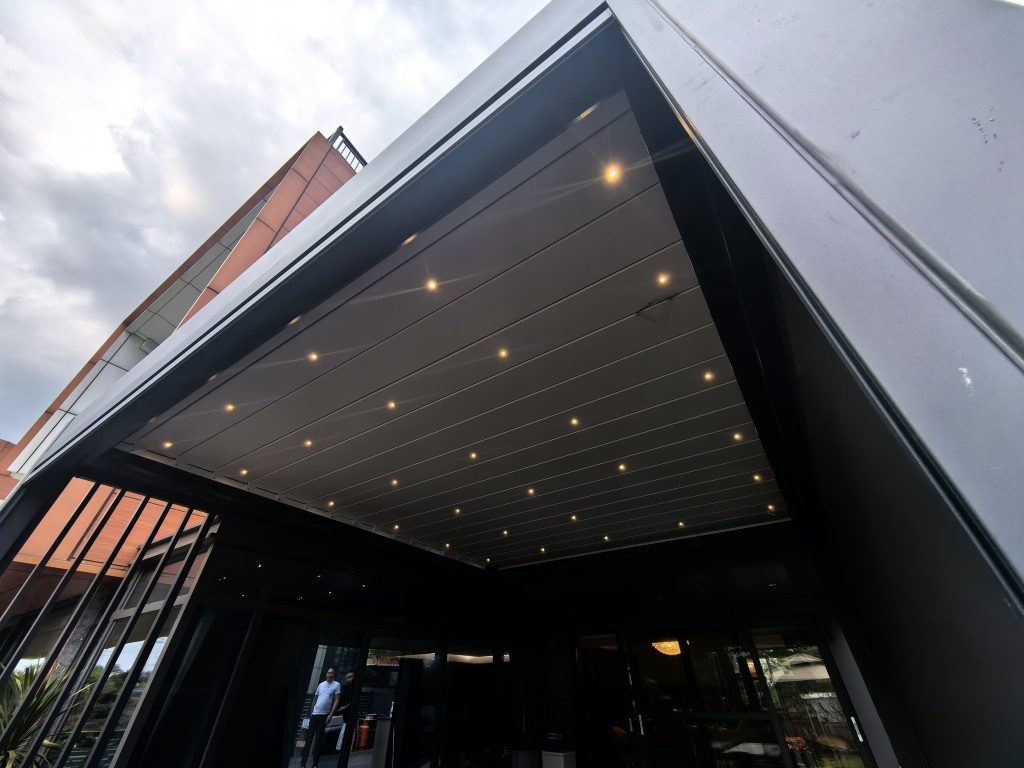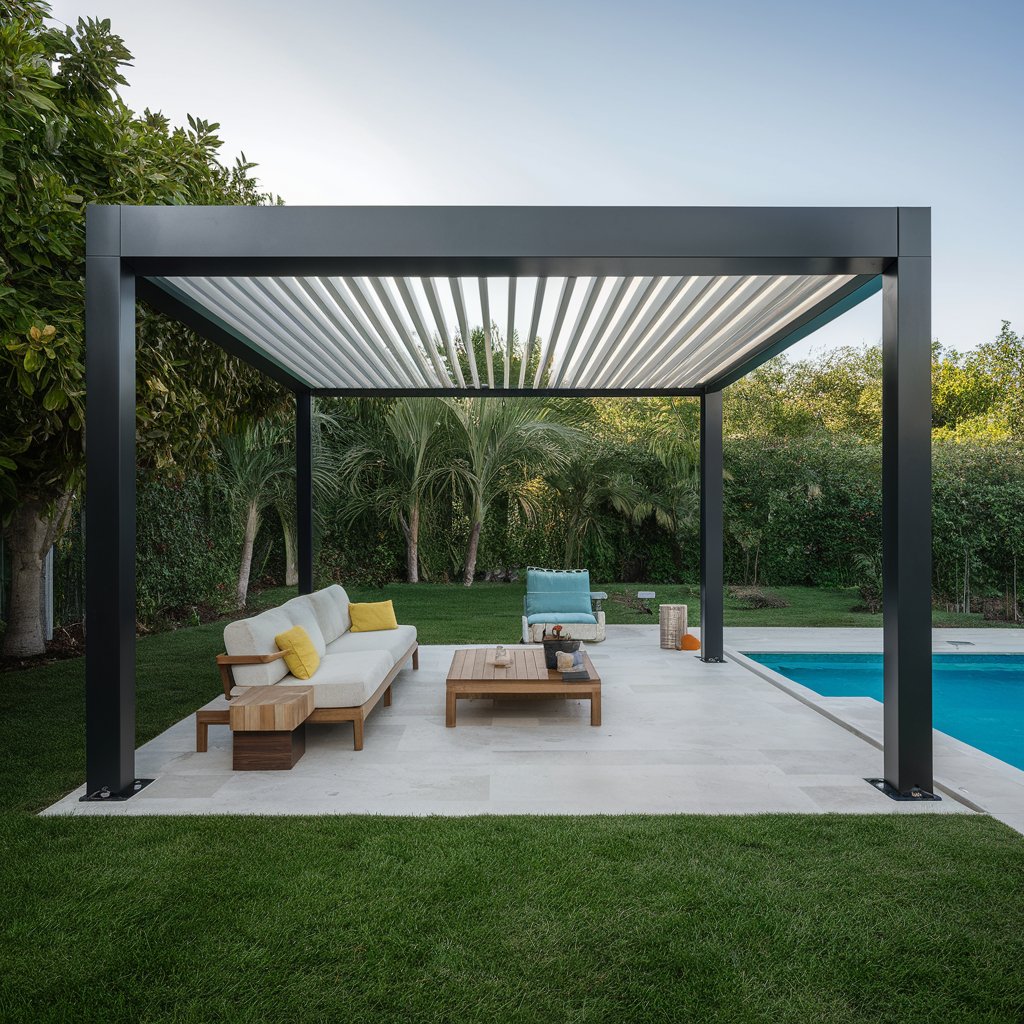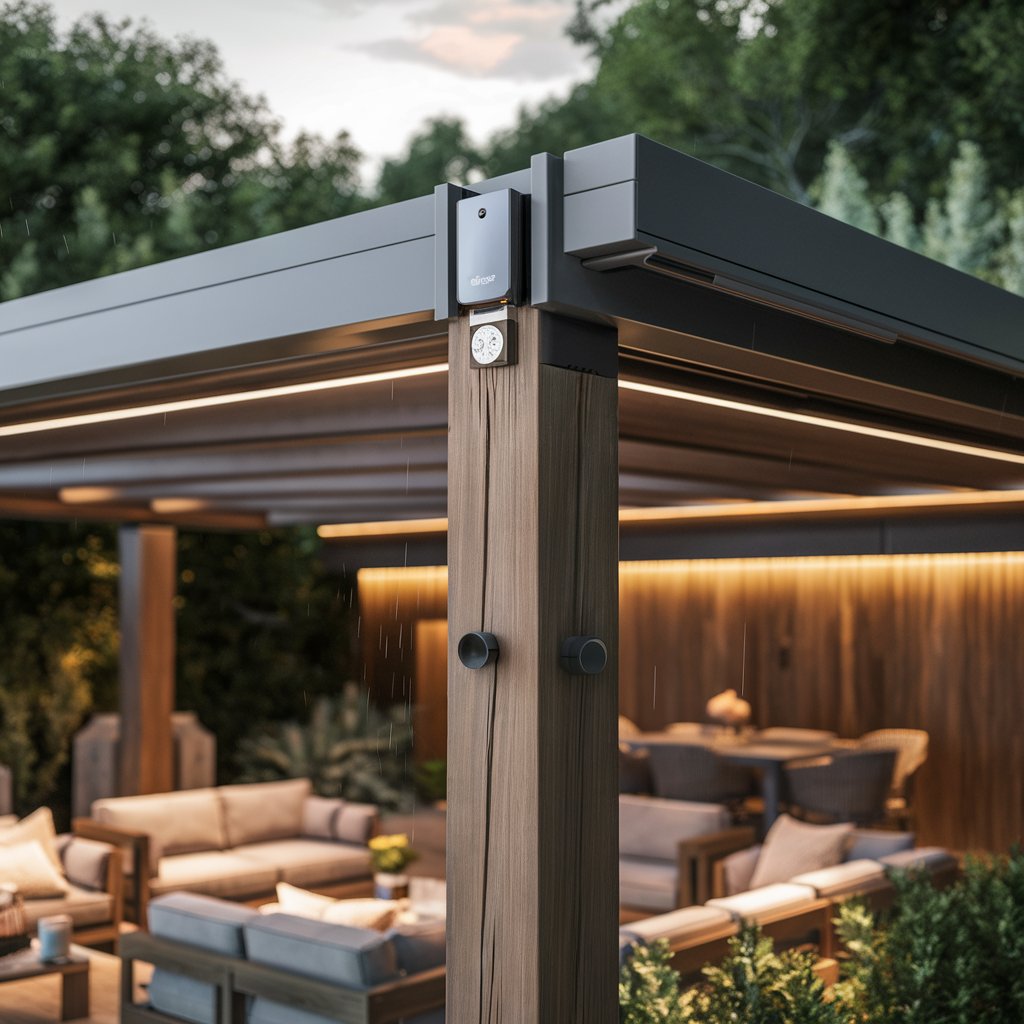When it comes to enhancing your outdoor living space, an strong aluminum pergola is an excellent choice. Known for its strength, durability, and modern aesthetics, an aluminum pergola can provide shade, structure, and a touch of elegance to your garden, patio, or deck. This comprehensive guide will delve into the benefits of aluminum pergolas, design considerations, construction techniques, and maintenance tips to help you build a pergola that stands the test of time.

Why Choose a Strong Aluminum Pergola?
Aluminum pergolas offer numerous advantages that make them a preferred choice for many homeowners. Here are some key benefits:
1. Durability
Aluminum is highly resistant to rust, corrosion, and weathering, making it ideal for outdoor structures. Unlike wood, aluminum does not rot, warp, or crack, ensuring long-term durability with minimal maintenance.
2. Low Maintenance
Aluminum pergolas require little maintenance compared to wooden or steel pergolas. They do not need to be stained, painted, or treated for insects. A simple wash with soap and water is usually sufficient to keep them looking clean and new.
3. Lightweight and Strong
Despite being lightweight, aluminum is incredibly strong. This makes aluminum pergolas easy to install while still providing robust support for additional features like climbing plants or lighting.
4. Modern Aesthetics
Aluminum pergolas offer a sleek and contemporary look that can enhance the overall appearance of your outdoor space. They are available in various styles and finishes, allowing for customization to match your design preferences.
5. Versatility
Aluminum can be easily molded into various shapes and designs, providing flexibility in pergola design. Whether you prefer a traditional look or a modern design, aluminum can accommodate your needs.
Design and Structural Considerations
To build a strong and durable aluminum pergola, careful planning and design are essential. Here are some key considerations:
1. Foundation and Anchoring
A solid foundation is crucial for the stability of your pergola. Use concrete footings to anchor the posts securely. The depth and size of the footings should be determined based on the pergola’s size and the soil conditions in your area. Metal post anchors can be used to secure the posts to the concrete, providing additional support.
2. Beam and Rafter Spacing
Proper spacing between beams and rafters is essential for the structural integrity of the pergola. Closer spacing enhances strength and provides more shade. Ensure the beams are thick and sturdy, capable of supporting the weight of the rafters and any additional elements. The spacing between rafters should be no more than 24 inches apart for optimal strength and support.
3. Cross Bracing
Incorporate cross bracing or diagonal supports to enhance the structural integrity of the pergola. This helps distribute weight evenly and prevents lateral movement, especially in windy conditions. Cross bracing can be added between the posts or along the beams for additional stability.
4. Wind Resistance
If you live in an area prone to high winds, consider additional features such as wind braces or hurricane straps to enhance the pergola’s wind resistance. These features help secure the pergola to the ground and prevent damage during storms.
5. Load-Bearing Capacity
Ensure the pergola is designed to support the weight of any additional features you plan to add, such as climbing plants, hanging lights, or outdoor furniture. This may require using thicker beams or additional supports.
Construction Tips for Strong Pergolas
Building a strong aluminum pergola requires attention to detail and adherence to best construction practices. Here are some tips to ensure success:
1. Quality Materials
Choose high-quality aluminum that is powder-coated to enhance durability and color retention. Powder coating provides a protective layer that prevents rust and corrosion, ensuring the pergola remains in excellent condition over time.
2. Precision Cutting and Drilling
Ensure all aluminum pieces are precisely cut and drilled to fit together seamlessly. This requires accurate measurements and careful attention during the cutting and drilling process. Pre-fabricated kits are available that come with pre-cut and pre-drilled pieces, simplifying the assembly process.
3. Strong Fasteners
Use strong, corrosion-resistant fasteners such as stainless steel bolts and screws to assemble the pergola. This ensures a secure and stable structure. Avoid using ordinary steel fasteners, as they can rust and weaken over time.
4. Proper Assembly
Follow the manufacturer’s instructions carefully to ensure proper assembly. Pay attention to details such as aligning beams and posts correctly, securing fasteners tightly, and using appropriate tools for each task. It may be helpful to have an extra set of hands to assist with holding pieces in place during assembly.
5. Inspection and Testing
After assembly, thoroughly inspect the pergola to ensure all components are securely fastened and the structure is stable. Test the pergola by gently shaking it to check for any movement or instability. Make any necessary adjustments to reinforce weak points.
Enhancing Your Aluminum Pergola
Once you have built a strong aluminum pergola, consider adding features to enhance its functionality and aesthetic appeal.
1. Shade Options
- Canopies: Add a retractable canopy to provide adjustable shade and protection from the sun. Canopies are available in various materials, including fabric, vinyl, and metal. A retractable canopy allows you to control the amount of shade as needed.
- Shade Cloths: Install shade cloths or sails to provide additional shade and reduce UV exposure. These can be easily attached to the pergola’s beams and rafters. Shade cloths are available in different densities and colors to match your design preferences.
- Climbing Plants: Plant climbing vines such as wisteria, jasmine, or grapevines to create a natural canopy of shade. Ensure the pergola is strong enough to support the weight of the plants as they grow. Climbing plants add a touch of greenery and natural beauty to your pergola.
2. Lighting
- String Lights: Hang string lights along the beams and rafters to create a warm and inviting atmosphere. Choose outdoor-rated lights that can withstand the elements. String lights come in various styles and colors, allowing for customization to match your outdoor decor.
- Lanterns: Install lanterns or pendant lights to provide focused lighting for dining or seating areas. Solar-powered options are available for easy installation without the need for wiring. Lanterns add a touch of elegance and provide functional lighting for evening use.
- Integrated Lighting: Consider integrating LED lighting into the pergola’s structure for a sleek and modern look. This can include recessed lights, strip lights, or spotlights. Integrated lighting provides a clean and seamless appearance while offering ample illumination.
3. Furniture and Decor
- Outdoor Furniture: Furnish the pergola with comfortable outdoor furniture such as sofas, chairs, and dining sets. Choose weather-resistant materials that can withstand exposure to the elements. Opt for furniture with cushions made of quick-drying fabric to ensure comfort and durability.
- Decorative Elements: Add decorative elements such as outdoor rugs, cushions, and throw pillows to create a cozy and inviting space. Incorporate colors and patterns that complement your outdoor decor. Decorative elements add personality and style to your pergola.
- Accessories: Enhance the pergola with accessories such as hanging planters, wind chimes, or outdoor art. These elements add personality and charm to the space. Hanging planters filled with colorful flowers or lush greenery can create a vibrant and lively atmosphere.
Maintenance Tips for Aluminum Pergolas
To ensure your aluminum pergola remains strong and beautiful for years to come, regular maintenance is essential.
1. Cleaning
Regularly clean the pergola to remove dirt, debris, and any buildup that can affect its appearance and durability. Use a mild detergent and water, and avoid harsh chemicals that can damage the powder coating. A soft brush or sponge can be used to gently scrub the surface, followed by rinsing with clean water.
2. Inspection
Periodically inspect the pergola for signs of damage, such as scratches, dents, or loose fasteners. Address any issues promptly to prevent further deterioration. Tighten any loose screws or bolts, and touch up any areas where the powder coating has chipped or worn away.
3. Coating Maintenance
Inspect the powder coating for signs of wear or damage. Touch up any areas where the coating has chipped or worn away to prevent rust and corrosion. Use a touch-up paint that matches the original color and finish of the pergola.
4. Structural Integrity
Regularly check the pergola’s structural integrity to ensure it remains stable and secure. Look for any signs of movement or instability, especially after severe weather conditions. Reinforce weak points as needed to maintain the pergola’s strength and stability.
Conclusion
Choosing an aluminum pergola for your outdoor space offers numerous benefits, including durability, low maintenance, and modern aesthetics. By focusing on quality materials, proper construction techniques, and thoughtful design, you can build a pergola that not only enhances your outdoor space but also stands the test of time. With regular maintenance and care, your aluminum pergola will provide a beautiful and functional outdoor living area for years to come. Whether you use it for relaxation, entertainment, or as a decorative feature, an aluminum pergola is a valuable addition to any home.


